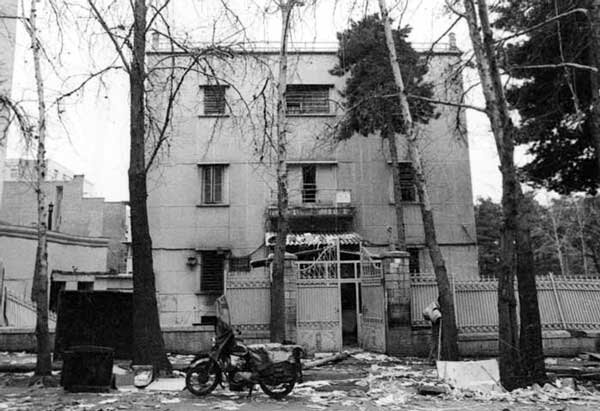Betraying Iran and the Muslim world
A look at Shah’s close relations with ‘Israel’ before the 1979 Islamic Revolution

TEHRAN – The Iranian government under Muhammad Reza Shah Pahlavi initially refused to recognize Israel after its establishment in 1948. However, as time passed and the Shah tightened his grip on power, he established official ties with the occupying regime.
In 1947, Iran was among 13 countries that voted against the United Nations Partition Plan for the British Mandate of Palestine. Two years later, Iran also voted against Israel's admission to the United Nations.
But after the 1953 coup in Iran, which was orchestrated by the United States Central Intelligence Agency (CIA), the amicable relations between Mohammad Reza Shah Pahlavi and the Tel Aviv regime began and continued to grow until the Islamic Revolution in 1979.
The Shah announced in an interview that Iran had de facto recognized the Israeli regime since 1949. Iran was the second Muslim country to recognize Israel following Turkey, sparking the wrath of Arab countries such as Egypt under Gamal Abdel Nasser.
Although the Zionist Israeli regime was not officially recognized by the Mohammad Reza Shah regime in Iran before the 1979 Islamic Revolution, the level of relations and cooperation between the two sides were friendly much like allies. The Shah considered the occupying regime as a friend and very close ally.
Israeli regime’s high-ranking officials would repeatedly visit Iran to hold meetings with the Shah regime’s authorities, despite sparking anger among Muslim nations.
For example, the visit of Abba Eban, the former Israeli deputy prime minister and foreign minister, to Tehran in December 1970 or the visit of Israeli Prime Minister Levi Eshkol to Iran in June A966 and his meeting with the then prime minister Amir-Abbas Hoveyda in July 1966 are two examples of these visits.
Iranian government officials would insist to the Israeli officials not to reveal the high level of their bilateral relations, but the Tel Aviv regime only sought to maximize its own gains without taking into account the Iranian government’s interests.
Many other Israeli officials visited Iran during Mohammad Reza Shah’s reign but their meeting would not be revealed to the media for fear of Iranian nation and Muslim nations’ anger. Historians say that many meetings between high-ranking leaders of the two regimes were held outside Tehran, mainly in the city of Ramsar in the north of the country as the Shah regime’s officials remained fearful of stirring public anger.
David Ben-Gurion's visit to Iran
The former Israeli regime’s prime minister David Ben-Gurion visited Iran on November 4, 1961, as the documents of the Iranian Ministry of Foreign Affairs show. Little is known about his visit and who he had held talks with during the trip.
As the primary founder of the Israeli entity bin Gurion developed the “alliance of the periphery" doctrine or the "periphery doctrine".
According to the periphery doctrine, the Israeli regime needed to forge an alliance with non-Arab (yet mostly Muslim) countries in the West Asia region as a counter-balance to the Arab states. Chief among these non-Arab states were Turkey and pre-revolution Iran.
Tehran-Tel Aviv had forged unofficial relations. Israel had an unofficial embassy in Tehran in the 1960s. It had two successive ambassadors.
After the nationalization of the Suez Canal by Egyptian President Gamal Abdel Nasser in 1956, the Israeli regime was in dire need of Iran’s crude. Therefore, it developed a robust oil trade with Iran under a crippling Arab boycott. As the Zionist regime’s historians argue, the basic logic for the sides was simple: My enemy’s enemy can be my friend, and the Shah regime and Israeli regime shared common Arab foes.
In a notable assistance to the Shah, Israeli experts helped in creating Mohammad Reza Pahlavi’s notorious secret police known as Savak. Israeli intelligence services and SAVAK were in a close relationship, with Israeli experts participating in SAVAK's personnel training.
1979 Islamic Revolution upends Iran ties with the Israeli regime
Iran after the 1979 Islamic Revolution led by Imam Khomeini reversed course in line with Muslim people’s demands and Iran severed all diplomatic and trade ties with the usurping Israeli regime. Even before the revolution, many Iranians were in Lebanon to help the oppressed of the Shia community and the Palestinian refugees there who were under attack by the Zionist regime in the south of the country.
As time passed, the Iranian government helped different Muslim nations in the region to forge a powerful alliance of Resistance forces against the occupying regime.
Unlike Arab nationalism, which suffered humiliating defeats against the Israeli regime in both the 1967 and the 1973 wars, the Resistance has come out victorious on every battlefield since 2,000.
The Resistance inspired by the Iranian revolution has now become a global movement and has found supporters among freedom seekers all around the globe, even among people in Western countries.
Today, Iran is proud of its assisting role in creating a powerful Resistance movement that has waged a successful battle against the most oppressive regime.
Leave a Comment